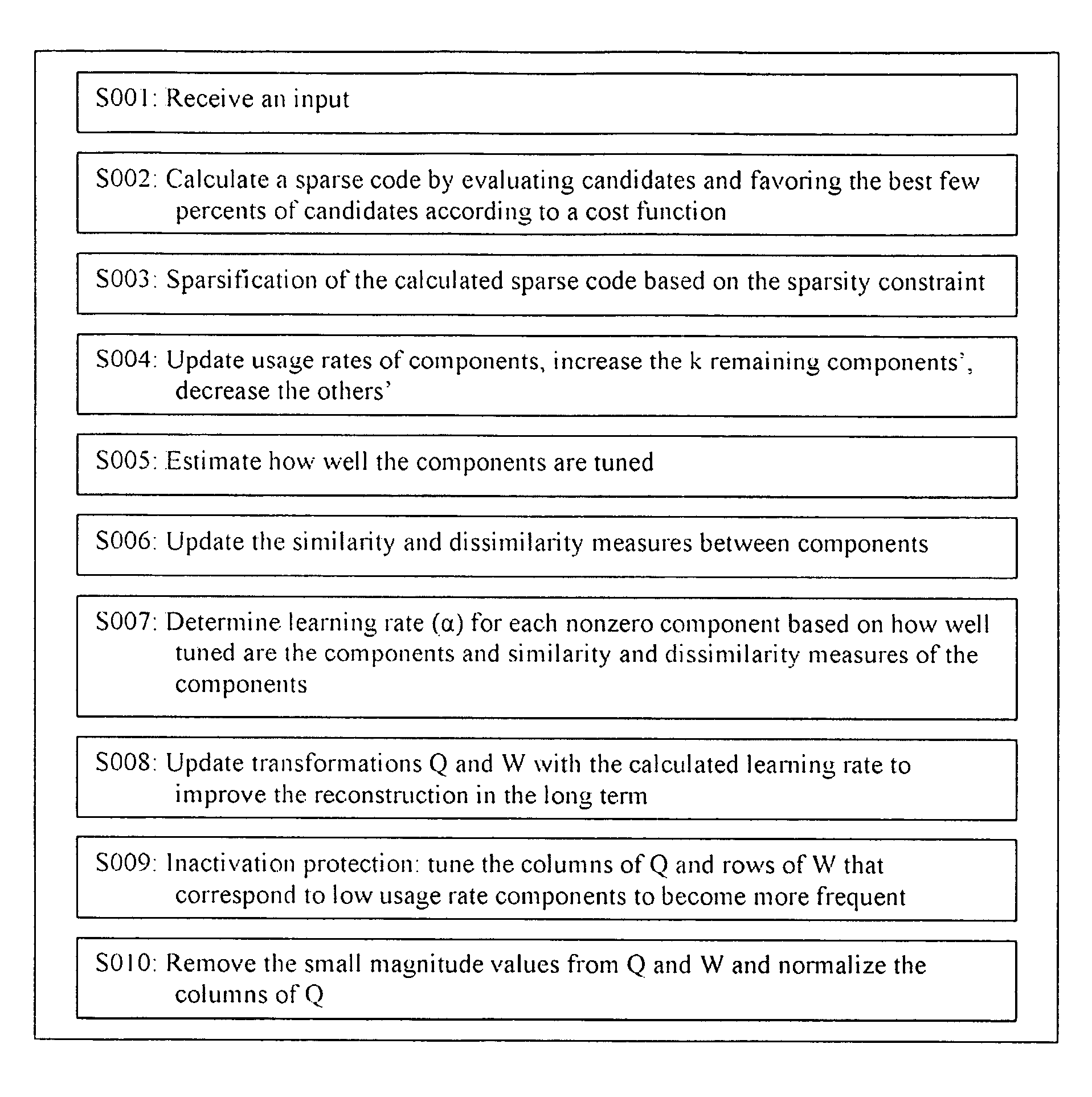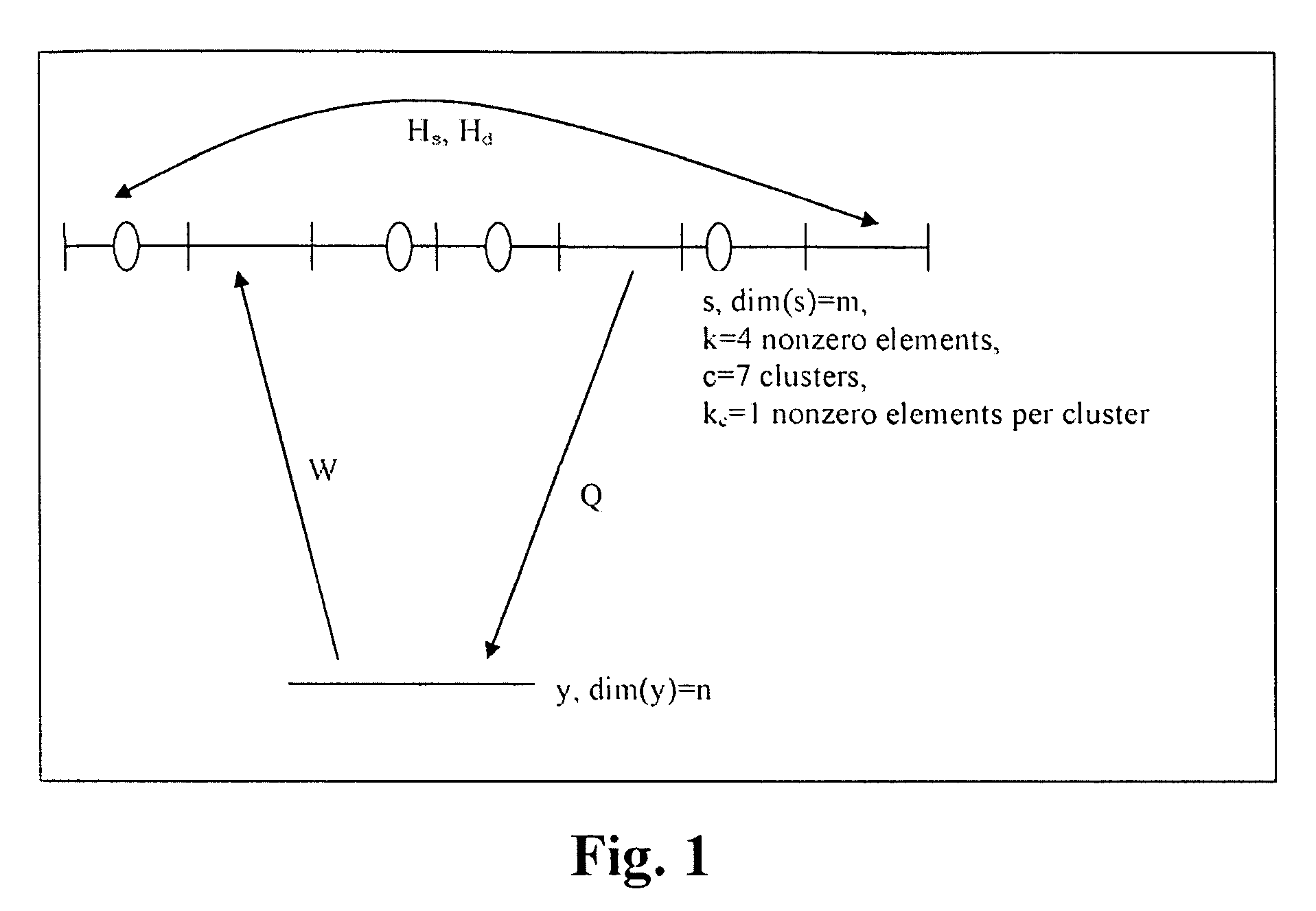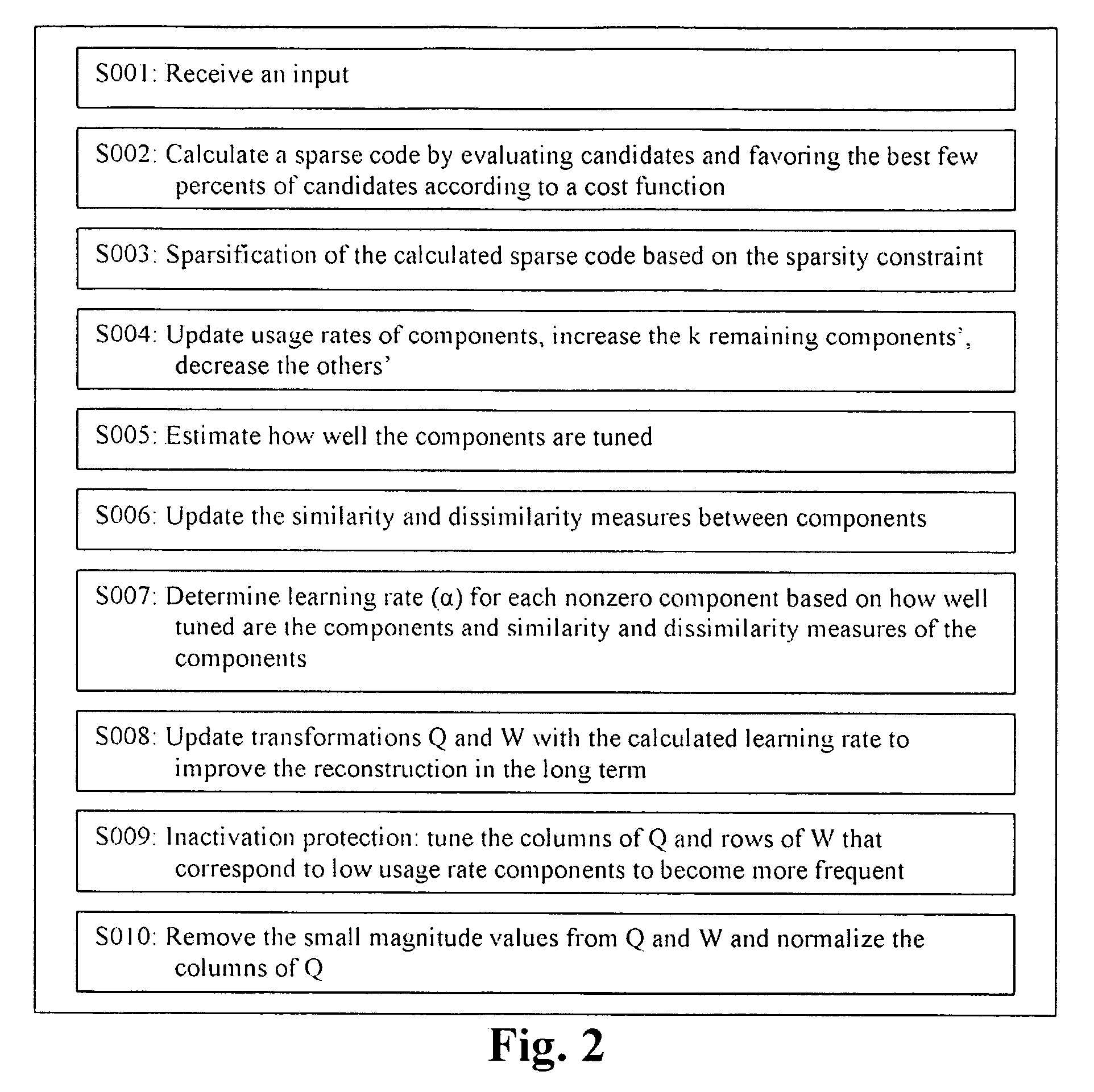Parallel and adaptive signal processing
a signal processing and parallel processing technology, applied in the field of digital signal processing, can solve the problems of increasing the rate of sending individual signal measurements, reducing the amount of data to be transmitted to other places, etc., and achieves the effects of improving the cost function and the transformation, reducing the amount of data to be transmitted, and low power components
- Summary
- Abstract
- Description
- Claims
- Application Information
AI Technical Summary
Benefits of technology
Problems solved by technology
Method used
Image
Examples
Embodiment Construction
I. One Method of the Present Invention
[0045]With reference to FIG. 1 which illustrates the architecture and notations of this method, in this embodiment, a signal is measured by an identity transformation. To reconstruct the measured signal, it is sufficient to reconstruct the measurement by the transformations. Particularly, denote the signal measurement as y, the sparse representation as s, the mapping that transforms from s to y by Q, and the mapping that transforms from y to s by W; these are the transformations to be learned or prewired. Denote the dimension of y by n, the dimension of s by m, and the number of maximum nonzero elements in s by k. The following constraints hold: k<
[0046]Further constraints on the sparse representation may be introduced. The sparse representation possibly may be partitioned into clusters. Thus, denote the number of clusters by c. Furthermore, the maximal number of nonzero elements in a cluster can be kc, c*kc>=k. It is possible to choose c=1...
PUM
 Login to View More
Login to View More Abstract
Description
Claims
Application Information
 Login to View More
Login to View More - R&D
- Intellectual Property
- Life Sciences
- Materials
- Tech Scout
- Unparalleled Data Quality
- Higher Quality Content
- 60% Fewer Hallucinations
Browse by: Latest US Patents, China's latest patents, Technical Efficacy Thesaurus, Application Domain, Technology Topic, Popular Technical Reports.
© 2025 PatSnap. All rights reserved.Legal|Privacy policy|Modern Slavery Act Transparency Statement|Sitemap|About US| Contact US: help@patsnap.com



